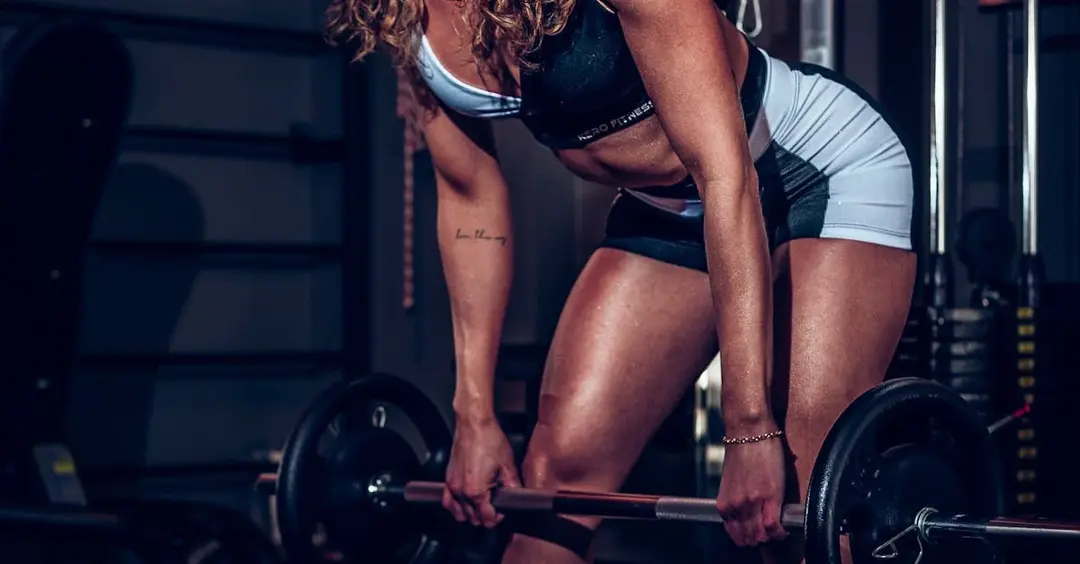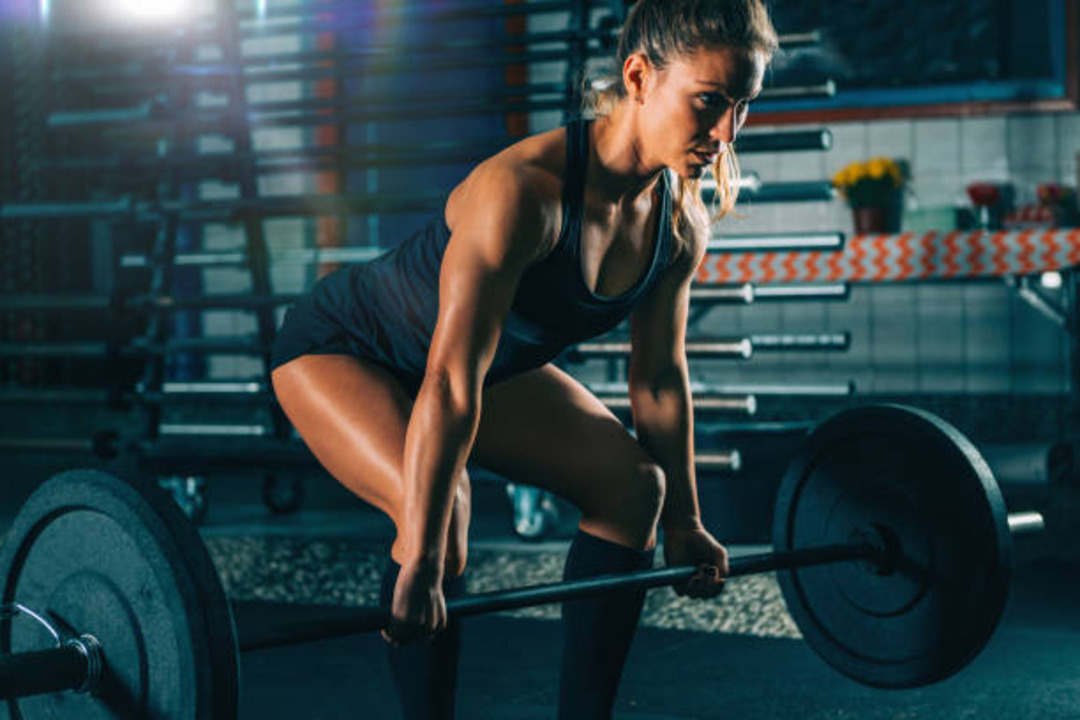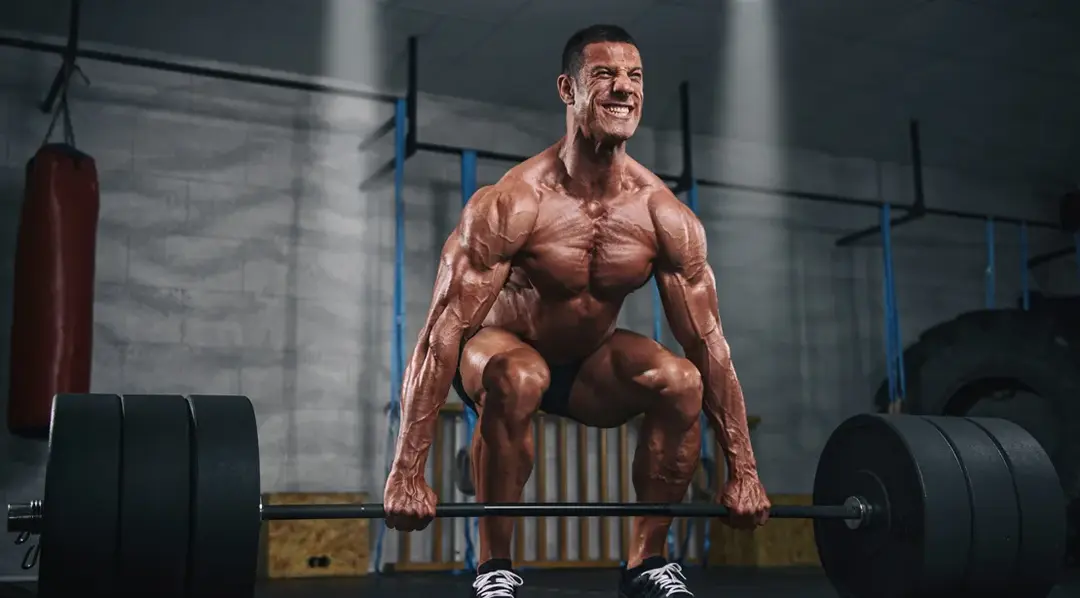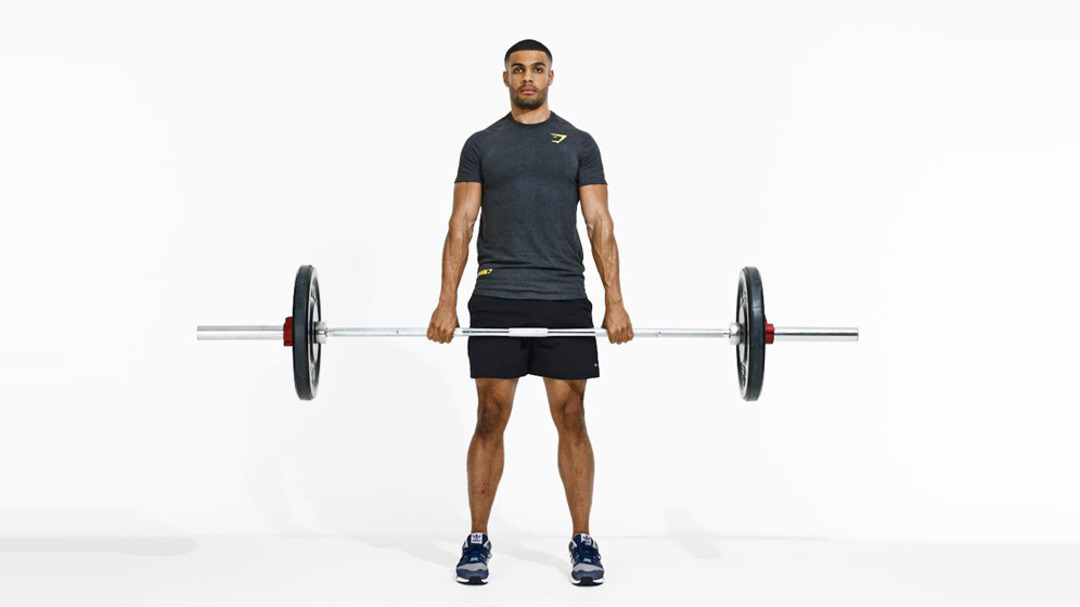What is the Average Deadlift Weight in Kg?

Curious about strength standards? Learn the average deadlift weight in kg for men and women, and see how your lift measures up.
The average deadlift weight in Kilograms matters in the Best Fitness Apps because it turns vague goals into clear benchmarks; yet, many lifters still wonder how their lifts stack up by bodyweight, age, or training level. Picture stepping under the bar and not knowing whether to chase a heavier one rep max or tighten your technique first.
This guide breaks down male and female averages, bodyweight ratios, and strength standards for novice, intermediate, and advanced lifters, as well as practical tips on grip, stance, programming, and progressive overload to help you set realistic targets and reach goals, such as improving form or increasing your one-rep max.
For that, GetFit AI's solution, an AI fitness app, creates simple plans, tracks your lifts in kilograms, and provides concise technique cues so you can build strength safely and meet your targets.
Summary
- The average male deadlift sits near 150 kg as a population midpoint, with an intermediate standard around 180 kg and a novice benchmark near 100 kg; therefore, these numbers are best used as context rather than prescriptive goals.
- Women’s deadlift benchmarks span roughly 50 kg for untrained lifters up to about 105 kg for experienced recreational athletes, with many intermediate women clustering near 87 to 90 kg. True novices commonly add 5 to 15 kg in 8 to 12 weeks with consistent training.
- Effective programming calls for two focused deadlift sessions per week: one heavy day, at about 70 to 85 percent of the top set, and one speed or volume day, using sustainable load increases of 2.5 to 5 percent or top-set jumps of 1.25 to 2.5 kg, as long as form remains tight.
- One-rep max testing should be rare, occurring about every 8 to 12 weeks. Superior progress indicators include monthly or weekly tonnage growth and repeatable doubles at an RPE two points below maximum, with intermediates typically gaining 2.5 to 5 percent strength per 8- to 12-week block.
- A 405 kg deadlift is an extreme outlier, achieved by roughly 1 in 100,000 people and representing less than 0.001 percent of the population, so it functions as a boundary marker rather than a realistic target for most gym-goers.
- Common failures stem from single-first, cookie-cutter templates that neglect volume and weak-link work. By training three times a week with prioritized accessory cycles, novices often add 10 to 20 kg in 8 to 12 weeks while maintaining technique.
- This is where GetFit AI's AI fitness app comes in; it addresses variability in body weight and training age by creating kilogram-based plans, tracking session tonnage and lifts, and offering brief technique cues.
Average Deadlift Weight in Kg For Men
.jpeg)
The average male deadlift sits near standard gym benchmarks. Still, it should serve as a guide, not a prescription: Strength Level, The average deadlift weight for men is 150 kg, a midpoint calculated across body weights and training experience that helps set realistic expectations. I treat that number as context — something to measure progress against, not the finish line.
What does that average actually mean for your training?
This figure represents a broad cross-section of lifters, rather than a single ideal. Strength Level, an intermediate male lifter can deadlift 180 kg, which Strength Level classifies as an intermediate strength standard. This gap illustrates how experience and programming can move you from average to intermediate. In practice, moving up those bands usually requires consistent weekly volume, targeted accessory work for the hips and posterior chain, and staged intensity increases rather than chasing single heavy lifts.
Where do form breakdown and ego lifts derail progress?
This pattern is observed among recreational lifters and weekend competitors: insecurity leads to rapid increases in load, technique deteriorates, and progress stalls or injuries occur. I’ve seen lifters who prioritized loading over control suffer recurring low back pain while their numbers barely climbed. The fix is concrete: insist on technical thresholds before adding weight, add glute-dominant assistance, and treat bar speed and position as performance metrics equal to absolute kilos.
Most people manage programming by copying random templates or chasing one-rep max milestones because it feels familiar and straightforward. That works early on, but as you add plates, small technical flaws compound into plateaus and injury risk, and training becomes inconsistent. Solutions like GetFit AI offer personalized athlete-style progressions and real-time conversational coaching, providing lifters with automated, safe load progressions and form cues, allowing them to continue building strength without repeating common mistakes.
How should you set measurable, realistic deadlift goals?
Select targets relative to your body weight and training age, then translate those into weekly volume and intensity bands. Use small incremental jumps, test 1RM sparingly, and track submax effort metrics like RPE, rep speed, and sets in reserve. Progress often appears as a slow climb in weekly tonnage, paired with cleaner reps at higher loads; that tradeoff beats occasional maximal attempts that leave technique compromised.
Which deadlift variations and accessories matter most?
Choose variations to fix weaknesses: conventional for posterior chain strength, sumo to shorten range and emphasize hips, Romanian deadlifts for hamstrings, and hip thrusts or glute bridges to close lockout gaps. Treat each accessory as a diagnostic tool: if lockouts fail, bias hip extension work; if the bar drifts, tighten upper-back stability and cue bracing.
That simple benchmark feels settled until you discover how differently the exact numbers land for different bodies and goals.
Average Deadlift Weight in Kg For Women?

Women’s average deadlift weight depends heavily on bodyweight and training age, but typical benchmarks range from roughly 50 kg for untrained lifters up to about 105 kg for experienced recreational athletes, with many intermediate women clustering near 87–90 kg. Treat those numbers as personalized directional targets, not one-size-fits-all absolutes.
What changes those averages between lifters?
Training age, programming quality, and lever length are the factors that create the most significant gaps in performance. Shorter femurs and relatively larger glutes help some women lift heavier weights for their body weight. At the same time, beginners with inconsistent training frequency or poor development of the posterior chain tend to lag, regardless of their genetics. I observe the same pattern across hundreds of clients: consistent twice-to three-times-per-week deadlift frequency, combined with targeted accessory work, produces the most significant and most reliable gains.
How do you translate an average into a realistic timeline?
Progress tends to be front-loaded, then slows. A true novice who trains 8 to 12 weeks with progressive overload and simple volume rules commonly adds 5 to 15 kg to their deadlift; beyond that, improvements become smaller and require more innovative programming, not just heavier singles. Test maximal effort only every 8 to 12 weeks, and use submax metrics like rep speed, RPE, and successful heavier doubles to judge progress between tests.
Why weight-relative targets matter more than raw kilos?
Split a goal into bodyweight multiples and weekly volume. Two lifters lifting the same amount of weight can be at very different strength levels if one weighs 55 kg and the other 85 kg. Use relative standards to set the right accessory priorities: a missing lockout suggests more hip extension work, while slow off-the-floor points to weaker first-pull mechanics or quad contribution.
What most people do and where it breaks down
Most lifters follow cookie-cutter templates because they are familiar and straightforward. That works early, but as training intensifies, those templates conceal mismatches between volume, intensity, and recovery. The hidden cost is predictable: stalled progress, chronic soreness, and avoidable technique breakdowns that deter lifters from continuing to lift in the long term. Platforms like GetFit AI offer personalized athlete-style progressions with conversational coaching and automated load adjustments, ensuring users maintain weekly tonnage and technical thresholds as demands increase.
How should you use male benchmarks for context, without getting misled?
For perspective, a novice male lifter can deadlift 100 kg. This 2023 Strength Level benchmark provides a raw starting point for men, which can aid in comparing absolute loads across sexes. For a population midpoint reference, the average deadlift weight for men is approximately 330 pounds (150 kg). Strength Level frames that number as a broad population average, not a goal each individual must match.
Practical drill I recommend for steady, measurable gains
Treat the deadlift like a compound skill built from small, repeatable wins. Structure two focused deadlift sessions per week, one heavier day at 70 to 85 percent of your recent top set for multiple sets, and one speed or volume day with lighter loads and perfect technique. Track session tonnage, not just one-rep maxes, and adjust weekly load by 2.5 to 5 percent when form remains tight and recovery is steady.
A short analogy to keep perspective
Think of strength like building a stone wall, one correctly set stone at a time. Slapping bigger stones on shaky mortar may look impressive for a day, but it collapses when the load shifts.
What to watch for next
That pattern of steady, volume-driven progress appears simple until one threshold is reached, and everything changes.
Related Reading
- Best Fitness Apps
- How Many Pull Ups Should I Be Able To Do
- Average Bench Press By Age
- Average Grip Strength Male
- Average Bench Press
- How Much Does A Bench Press Bar Weigh
- Average Male Bench Press
- How Much Can The Average Man Bench Press
Is a 100 kg Deadlift Good?

That lift is a meaningful milestone when judged against your body, training age, and goals, not a universal badge of elite strength. According to Strength Level, a 100 kg deadlift is considered average for a male lifter, while for a female lifter, it is considered above average. Hence, its significance depends on who you are and where you want to go.
Who benefits most from treating that weight as a win?
This matters most for lighter lifters, women, and beginners who will see measurable functional gains from that load. The practical signal you want is not a single number; it is whether your technique, recovery, and training consistency improved while carrying that load. A cleaner hip hinge, steady lockouts, and fewer grindy reps indicate that the lift is of high quality, not just heavy.
How should you judge progress beyond a single rep?
Look at repeatable performance metrics, not a one-off max. If you can move submax sets at controlled tempo, add small weekly tonnage, and hit prescribed RPE ranges without form collapse, the weight is doing its job. Treat bar speed, rep quality, and successful doubles or triples under load as leading indicators that the one-rep number will follow.
What common mistakes turn a respectable lift into a liability?
Most lifters copy programs because they are familiar, and that works well early on, but it breaks down when the load outpaces the skill. The hidden cost is predictable: sloppy reps, nagging low-back soreness, and stalled weekly volume that kill long-term progress. Platforms like GetFit AI bridge that gap by delivering athlete-inspired progressions and conversational coaching that adjust load, accessory choices, and technique cues as you fatigue, keeping weekly tonnage and movement quality aligned as demands rise.
When does that weight tell you a real weakness to fix?
If the bar explodes off the floor but everything crumbles at lockout, that points to hip extension weakness and missing heavy three-quarter reps; if the bar never moves quickly from the floor, your hinge pattern or starting strength is the bottleneck. Diagnosing by watching movement at submax loads: speed loss, inconsistent hip drive, or a wandering bar path reveals different training fixes. Think of it like a car that idles fine but dies under acceleration; the symptom tells you whether to tune the carburetor or replace the clutch.
How to keep the momentum after hitting the milestone?
Treat it like a checkpoint, not a finish line. Build a short, measurable plan: preserve the movement quality that got you there, add targeted technical sessions twice a week for 8 to 12 training blocks, and prioritize easy recovery habits that let you train more consistently. Small, repeatable load increases and more explicit cues are more effective than dramatic jumps; the right habit is a slow, reliable compound increase in weekly tonnage and control.
When progress stalls, what else changes besides programming?
Motivation and comparison do more damage than you expect. Beginners often feel deflated when they compare their numbers to those of stronger lifters, and that feeling of shame can interrupt their consistency. When we coached beginner lifters over 12 weeks, the pattern was clear: those who reframed success around technical wins and consistent sessions continued training longer and rebuilt momentum faster than those who chased purely numerical milestones.
Ready to train like the legends and finally achieve the body you've always wanted?
GetFit AI's AI fitness trainer app lets you follow the exact workout routines that made Arnold Schwarzenegger, Kobe Bryant, Cristiano Ronaldo, Serena Williams, and 11+ other elite athletes into champions; you can also chat with them whenever you need guidance or motivation, so download the #1 rated AI fitness app for free today to get fit for less than the cost of a single month's gym membership, because greatness isn't from birth, it's built one workout at a time.
That feels settled, until you learn how rare the truly massive lifts are and what that rarity actually says about training and physiology.
How Rare is a 405 kg Deadlift?

A 405 kg deadlift is not just uncommon; it sits at the very edge of human performance and requires a rare combination of size, technique, and long-term specialization. Hitting that number implies the athlete has optimized more variables than most lifters will ever touch, so it is a meaningful statistical outlier rather than a realistic target for the majority of gym-goers.
Why does 405 kg sit at the extreme tail of strength distributions?
Power output and strength scale unevenly across people. A handful of factors combine to create that tail: large absolute muscle mass, favorable bone and tendon leverage, years of consistent high-load training, and often federation-specific conditions like gear or drug testing. That mix concentrates results among a tiny subset of athletes, which is why All About Powerlifting states, "only 1 in 100,000 people can deadlift 405 kg." This figure highlights the exceptional nature of the combination of traits, even when training is taken seriously.
Which physiological and structural factors make it so rare?
Constraint-based thinking helps here, because specific body shapes simply shift the odds. Longer torsos, short femurs, thicker posterior chains, and dense connective tissue all favor heavy pulls. Hormonal profiles, recovery capacity, and injury history further narrow the field. To put the lift in population terms, All About Powerlifting states, "A 405 kg deadlift is achieved by less than 0.001% of the population." This indicates that it is an outlier across sexes, ages, and training levels when considering the entire public, not just gym regulars.
How do athletes structure training to produce that kind of lift?
When athletes aim for extreme loads, their months and years look different from those of hobby lifters. Volume is planned in multi-month blocks, with heavy accumulation phases alternating with technical peaking blocks of 6 to 12 weeks. Typical elements include two to three weekly deadlift-focused sessions that separate heavy top-end work from speed and volume days, targeted accessory cycles for weak links, and strict recovery programming to preserve weekly tonnage. The real difference is not a single secret move; it is disciplined repetition of high-quality heavy work while avoiding chronic overreach.
Most people manage progress by chasing maximal singles because it feels direct and measurable, and that approach is familiar and easy to start with. The hidden cost is that singles-first training hides weak links, fragments weekly tonnage, and raises injury risk as loads climb. Solutions like GetFit AI offer athlete-style periodization with conversational coaching, automating load increases based on RPE and rep quality, recommending accessory cycles to address weak points, and adjusting frequency when recovery flags are detected, allowing lifters to build sustainable strength rather than oscillating between injury and stalled progress.
What does that rarity mean for how you set goals and measure progress?
Problem-first: comparing yourself directly to that extreme number is misleading and corrosive to consistency. Instead, treat elite lifts as boundary markers that tell you what specialization looks like, not what everyone must reach. Focus on repeatable metrics that predict long-term increases, for example, controlled triples at a given RPE, monthly tonnage growth, or consistent technique under fatigue. Think of it like tuning a high-performance engine, not swapping engines; minor, measurable adjustments produce reliable speed without blowing the motor.
That headline rarity raises a quieter, personal question you probably do not want to answer yet, and that makes the next section surprisingly necessary.
Related Reading
- Bench Press Standards
- Do Pull Ups Work the Chest
- Symmetric Strength
- Average Deadlift Weight
- Grip Strength Norms
- 1 Rep Max Chart
- Average Male Deadlift
- Good Bench Press Weight
How Much Should a 70 kg Man Deadlift?

A 70 kg man should pick a deadlift target from a band, not a single number: start by securing technical control at near-bodyweight, then move toward strength milestones that match your training age and recovery. Use short, measurable cycles so progress is steady, not dramatic, and let your program guide you on when to increase the load, rather than relying on ego.
What are realistic short-term and medium-term targets for a 70 kg man?
If you are just learning the hinge, set an 8- to 12-week goal to add 5 to 15 kg to your working sets while maintaining clean form, and treat those gains as progress. Over 4 to 12 months, many lifters aim for roughly 1.5 times bodyweight as a helpful marker, and a multi-year trajectory can move you toward double bodyweight if you specialize and prioritize recovery. For context and population perspective, a 100 kg deadlift is considered average for a male lifter, which helps place those multiples against broader standards.
How should you structure sets, reps, and weekly workload?
Constraint-based: if you can only make three gym sessions a week, assign one heavy top-end day, one controlled-submax volume day, and one accessory day for posterior chain and bracing. A practical 12-week mesocycle for a 70 kg lifter moving from intermediate to stronger might look like this: week 1 to 4, build volume at 60 to 75 percent of your recent heavy set with four sets of 5 on the volume day; week 5 to 8, push top sets into 80 to 90 percent for singles and doubles while keeping accessory load to maintain bar speed; week 9 to 12, taper volume slightly and test heavier doubles under tight technique. Increase top-set weight by 1.25 to 2.5 kg when rep quality remains high, and consider a 5 to 10 percent jump in weekly tonnage over a 2- to 4-week block as the sustainable target.
Which performance metrics predict long-term gains better than chasing a 1RM?
Problem-first: one-rep maxes feel decisive, but they lie. Track weekly tonnage, consistent doubles at prescribed RPE, bar velocity on your second rep, and the percentage of sets completed at target tempo. For example, if you can hold controlled doubles at an RPE two below max for three consecutive weeks while adding small load, that predicts a new one-rep peak far better than an occasional maximal attempt. Use simple video checks too: consistent shin angle, neutral spine, and hip crease timing tell you more about durable progress than any headline number.
Most lifters build their programs by adding plates to the bar because it feels direct and satisfying, and that familiar approach works early on. What it hides is cost: volume gets neglected, weak links go unaddressed, and minor technical faults compound into stalled progress and soreness. Platforms like GetFit AI offer personalized athlete-style progressions with automated load adjustments, conversational form cues, and accessory prescriptions, ensuring lifters maintain weekly tonnage, movement quality, and recovery alignment as demands increase.
How long will it take to add 10 to 20 kg to your deadlift?
Specific experience matters: a true novice who trains three times a week with consistent progressive overload often adds 10 to 20 kg within 8 to 12 weeks, provided they have solid nutrition and sleep. For an intermediate lifter, expect slower returns, with roughly 2.5 to 5 percent strength gains per 8- to 12-week block, because adaptations are more minor and you must engineer overload more precisely. Also note the population context, as lifting heavier than the standard community marks shifts how you plan training intensity and recovery, as well as your Strength Level. Lifting 100 kg places you in the top 50% of male lifters, which helps frame those probabilities.
Which accessory choices and technical drills speed the climb for a 70 kg athlete?
Choose variations that diagnose and correct sticking points, and measure progress by how they change top-set quality. If the bar stalls at mid-shin, add deficit pulls and tempo work for 6 to 10 weeks and expect measurable bar-speed gains within that block. If you miss lockouts, program heavy hip extension cycles, such as heavy three-quarter pulls and weighted glute bridges, twice weekly for 8 weeks. Track these changes with one objective metric: completing the same submax set at a lower RPE and faster bar speed over 4 weeks.
Think of this like building a bridge across a river, not sprinting across it. Each controlled repetition, accessory session, and smart recovery habit is a plank that makes the span safer and stronger.
There is one uncomfortable gap most programs leave unfilled, and it explains why some lifters stall when they should be progressing.
Related Reading
- Average Deadlift Weight Kg
- Best Hiit Workout App
- Average Bench Press By Age 16
- Best Free Workout Apps
- Average Deadlift Weight For Male
- Best Workout Apps
- Average Bench Press Kg By Age
- Best Calisthenics Workout App
- Best Workout Tracker App
- Best Gym Workout App
Make Your Favorite Athlete Your Fitness Trainer | Try GetFit AI's AI Trainer App for Free Today

If you want deadlift progress that reflects your bodyweight, training age, and the kilos you lift, consider GetFit AI for athlete-style, personalized progressions and conversational coaching that keep technique and weekly tonnage aligned. Platforms like GetFit AI show real results. With GetFit AI, 90% of users reported improved fitness levels within 3 months and a user rating of 4.8 out of 5 stars on the App Store, so you can scale deadlift gains safely and affordably without guessing at the right loads.



.png)











